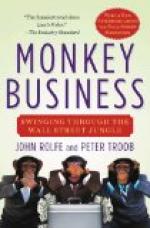“My God! The missing pair of boots!” cried Coquenil. “Was it?”
Tignol nodded. “Sure! He was carrying ’em loose in his hand. I mean they were not wrapped up, he was going to leave ’em in Kittredge’s room—here it is, A.” He pointed to the diagram.
“It’s true, it must be true,” murmured M. Paul. “And what then?”
“Nothing. I guess the man saw it was only a shrimp he had hold of, so he shook him two or three times and dropped him back into his own room; and he never said a word.”
“And the boots?”
“He must have taken the boots with him. The shrimp peeped out and saw him go back into this room F, which has been empty for several weeks. Then he heard steps on the stairs and the slam of the heavy street door. The man was gone.”
Coquenil’s face grew somber. “It was the assassin,” he said; “there’s no doubt about it.”
“Mightn’t it have been some one he sent?” suggested Pougeot.
“No—that would have meant trusting his secret to another man, and he hasn’t trusted anyone. Besides, the fierce way he turned on the photographer shows his nervous tension. It was the murderer himself and—” The detective stopped short at the flash of a new thought. “Great heavens!” he cried, “I can prove it, I can settle the thing right now. You say his nail marks show?”
Tignol shrugged his shoulders. “They show as little scratches, but not enough for any funny business with a microscope.”
“Little scratches are all I want,” said the other, snapping his fingers excitedly. “It’s simply a question which side of his throat bears the thumb mark. We know the murderer is a left-handed man, and, being suddenly attacked, he certainly used the full strength of his left hand in the first desperate clutch. He was facing the man as he took him by the throat, so, if he used his left hand, the thumb mark must be on the left side of the photographer’s throat, whereas if a right-handed man had done it, the thumb mark would be on the right side. Stand up here and take me by the throat. That’s it! Now with your left hand! Don’t you see?”
“Yes,” said Tignol, making the experiment, “I see.”
“Now bring the man in here, wake him, tell him—tell him anything you like. I must know this.”
“I’ll get him in,” said the commissary. “Come,” and he followed Tignol into the hall.
A few moments later they returned with a thin, sleepy little person wrapped in a red dressing gown. It was the shrimp.
“There!” exclaimed Papa Tignol with a gesture of satisfaction.
The photographer, under the spell of Pougeot’s authority, stood meekly for inspection, while Coquenil, holding a candle close, studied the marks on his face. There, plainly marked on the left side of the throat was a single imprint, the curving red mark where a thumb nail had closed hard against the jugular vein (this man knew the deadly pressure points), while on the right side of the photographer’s face were prints of the fingers.




